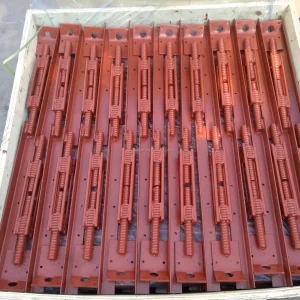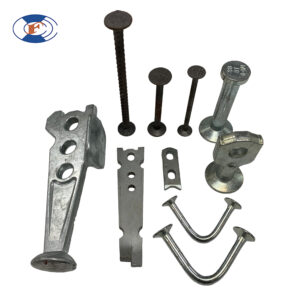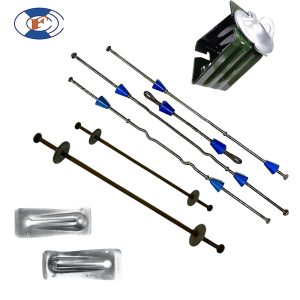Building concrete forms is a crucial skill for any construction project involving concrete work. This comprehensive guide will take you through the process of creating sturdy, reliable forms, ensuring your concrete pours are smooth and successful. Whether you’re a seasoned professional or a DIY enthusiast, follow these steps to build concrete forms with confidence.
Learn how to build concrete forms with this straightforward guide. From gathering materials to assembling and securing the forms, we’ll cover everything you need to know to create strong, precise concrete forms for any project. Follow these steps to ensure your concrete pours are smooth and successful.
Step-by-Step Guide to Building Concrete Forms
1. Gather Your Materials
Steel or Aluminum Formwork Panels
Steel and aluminum formwork panels are essential for shaping your concrete structure. Steel formwork offers durability, ideal for robust projects, while aluminum is lightweight and quick to set up, suited for smaller or faster projects.

Concrete Stakes
Concrete stakes anchor formwork panels firmly in place. Made of steel, they’re driven into the ground along the formwork perimeter, providing stability crucial for maintaining form shape during concrete pouring.

Snap Ties
Snap ties hold formwork panels together, maintaining consistent spacing. These ties consist of a central tie rod with fasteners, snapped off cleanly after concrete sets for a smooth finish.

Jahn A Brackets
Used with snap ties, Jahn A brackets provide additional support and alignment, ensuring straight, stable panels during pouring.

Wedge Bolts
Wedge bolts secure Jahn A brackets to formwork panels, preventing movement during concrete placement.

X-Flat Ties
X-Flat ties are used to secure the formwork panels together horizontally. They are essential for maintaining the alignment and stability of the forms during the concrete pouring process.

Aluminum Form Ties
Aluminum form ties provide a strong connection between formwork panels. They are lightweight and easy to handle, making them ideal for quick assembly and disassembly of formwork systems.

Turnbuckle Form Aligners
Turnbuckle form aligners are used to ensure the formwork panels are perfectly aligned and straight. They provide adjustable tension to maintain the correct position of the panels during the concrete pour.

Lifting Anchors
Lifting anchors are used to lift and move concrete panels safely and securely. They are embedded in the concrete during pouring and provide a reliable attachment point for lifting equipment.

Screws or Nails
Screws or nails are used to fasten formwork panels to concrete stakes and to each other. They provide additional support and ensure the panels are tightly secured in place.
Hammer or Drill
A hammer or drill is essential for driving screws or nails into formwork panels and stakes. These tools make the assembly process quicker and more efficient.
Measuring Tape
A measuring tape is crucial for accurately measuring the dimensions of your formwork layout. Precise measurements ensure that your concrete structure is built to the correct specifications.
Level
A level is used to ensure that the formwork panels are perfectly horizontal and aligned. This is critical for achieving a smooth concrete surface.
String Line
A string line is used to mark straight lines and boundaries for the formwork layout. It helps in aligning the formwork panels accurately, ensuring they are set in a straight line.
Oil or Form Release Agent
Applying oil or a form release agent to the inside surfaces of the formwork panels prevents the concrete from sticking to them. This makes it easier to remove the formwork once the concrete has cured and helps maintain the quality of the concrete surface.
2. Plan and Measure
Begin by planning the layout of your concrete form. Accurate measurements and careful planning are essential to ensure that your concrete form is constructed correctly.
Site Preparation: Start by preparing the site where the concrete will be poured. Clear the area of any debris, vegetation, or other obstructions. Ensure the ground is level and compacted to provide a stable base for the formwork.
Measure and Mark: Use a measuring tape to measure the dimensions of the area where the concrete will be poured. Mark the boundaries using stakes and string lines. Double-check all measurements to ensure accuracy.
Consider the Formwork Height: The height of your formwork should match the desired thickness of your concrete slab. Make sure to plan for any necessary slopes or gradients in your concrete structure.
3. Prepare the Form Panels

Ensure your steel or aluminum formwork panels are cut or selected to the required lengths. The height of the panels should match the desired thickness of your concrete slab. For larger forms, consider additional reinforcement.
Cut to Size: If using pre-cut panels, ensure they are the correct length and height. If cutting panels yourself, use appropriate tools to achieve clean, precise cuts.
Check for Defects: Inspect all formwork panels for any damage or defects. Ensure they are free from warping, cracks, or other issues that could compromise the integrity of the formwork.
4. Assemble the Form

Place the form panels along the marked boundaries and secure them with concrete stakes. Use screws or nails to attach the panels to the stakes, ensuring they are level and aligned correctly. Double-check for any gaps or misalignments and make necessary adjustments.
Position the Panels: Start by positioning the panels along the marked boundaries. Make sure they are aligned with the string lines and level.
Secure with Stakes: Drive concrete stakes into the ground at regular intervals along the outside of the panels. Attach the panels to the stakes using screws or nails.
Reinforce with Snap Ties and Jahn A Brackets: Use snap ties and Jahn A brackets to reinforce the formwork panels, ensuring they remain straight and stable during the concrete pour.
Add X-Flat Ties and Aluminum Form Ties: For additional horizontal stability, use X-Flat ties and aluminum form ties. These ties help maintain the alignment and spacing of the formwork panels.
Install Turnbuckle Form Aligners: Use turnbuckle form aligners to adjust the alignment of the formwork panels. These aligners provide adjustable tension to ensure the panels are straight and properly positioned.
5. Reinforce the Form

For larger or more complex forms, add extra bracing or support to prevent the form from bowing or shifting during the pour. This can include additional stakes, cross braces, or metal rebar. Snap ties and Jahn A brackets are particularly useful for holding the form panels together securely.
Cross Bracing: Use cross braces to provide additional support for the formwork. These braces can be attached diagonally across the form to prevent bowing or shifting.
Metal Rebar: For larger projects, consider using metal rebar to reinforce the concrete. Rebar provides additional strength and helps prevent cracking.
6. Apply Form Release Agent
To ensure the concrete does not stick to the form panels, apply a form release agent or oil to the inside surfaces of the form. This will make it easier to remove the forms once the concrete has cured.
Choose the Right Agent: Select a form release agent that is compatible with your formwork material and the type of concrete you are using.
Apply Evenly: Use a brush or sprayer to apply the release agent evenly to the inside surfaces of the form panels. Ensure complete coverage to prevent the concrete from sticking.
7. Pour the Concrete

With the forms securely in place, you are ready to pour the concrete. Carefully fill the form with concrete, ensuring it is evenly distributed and properly compacted. Use a screed board to level the surface and remove any excess concrete.
Mix the Concrete: Prepare the concrete according to the manufacturer’s instructions. Ensure it has the right consistency for your project.
Pour in Sections: If pouring a large area, work in sections to ensure even distribution. Use a concrete pump or wheelbarrow to transport the concrete to the form.
Compact the Concrete: Use a tamper or vibrating tool to compact the concrete, removing any air pockets and ensuring it fills the form completely.
Screed the Surface: Use a screed board to level the surface of the concrete, removing any excess material and achieving a smooth finish.
8. Allow the Concrete to Cure
Let the concrete cure according to the manufacturer’s instructions. This typically involves keeping the surface moist and protected from extreme temperatures for a specific period.
Maintain Moisture: Cover the concrete with plastic sheeting or a curing blanket to retain moisture and prevent drying out. Alternatively, use a misting system to keep the surface wet.
Protect from Temperature Extremes: Avoid pouring concrete during extreme temperatures. If necessary, use heaters or cooling systems to maintain a consistent curing environment.
9. Remove the Forms
Once the concrete has fully cured, carefully remove the form panels. Start by removing the stakes and then gently prying the panels away from the concrete. Be cautious not to damage the edges of the slab during this process.
Remove Stakes First: Begin by removing the stakes that anchor the formwork panels in place. Use a pry bar or hammer to gently lift the stakes out of the ground.
Pry Panels Carefully: Use a pry bar to carefully separate the formwork panels from the concrete edges. Work slowly to avoid chipping or damaging the concrete.
Snap Off Ties: If using snap ties, break off the exposed ends to leave a clean finish on the concrete surface.
10. Final Touches
Inspect the concrete surface for any imperfections and make necessary repairs. Your concrete structure is now ready for use.
Inspect for Defects: Check the concrete surface for any cracks, chips, or other imperfections. Use a patching compound to repair any minor defects.
Clean Up: Remove any debris or excess material from the site. Properly dispose of any waste and clean your tools and equipment.
Seal the Concrete: If desired, apply a concrete sealer to protect the surface and enhance its durability. Follow the manufacturer’s instructions for application and curing times.
By following these steps and using the appropriate materials, you can build strong, reliable concrete forms for any project. Whether you’re constructing a foundation, a wall, or another concrete structure, proper formwork is essential for achieving a successful and long-lasting result.




